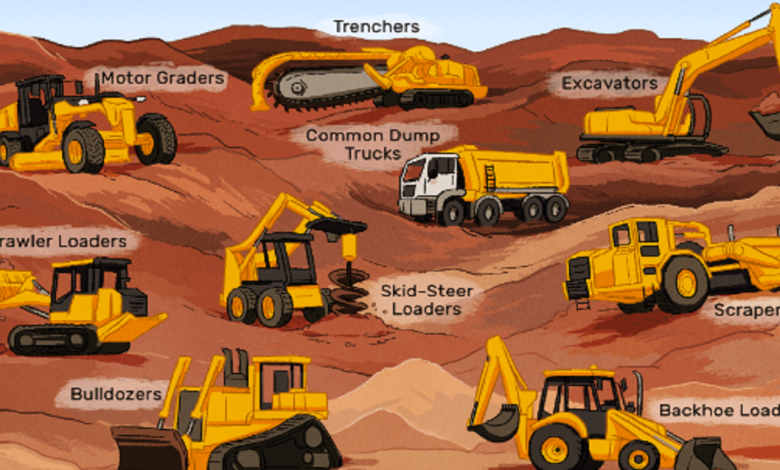Building Dreams, Crafting Futures
Vietnam Construction Equipment Market and Analysis Report – Opportunities and Forecast 2024-2030

What technological advancements are driving the growth of Vietnam construction equipment market?
The construction industry in Vietnam is using advanced technology to make construction management and site operations sustainable and more efficient. Construction equipment plays an important role in construction activities, by speeding up tasks, reducing labor charges, and saving operational costs. Vietnam is a developing country in the East Asian region, that is substantially investing in developing infrastructure. The growing construction industry of Vietnam is facing a number of trends and technological advancements to meet diverse construction needs and environmental issues. Vietnam construction equipment market is a rapidly evolving landscape due to growing demand for advanced construction machinery in the market.
Trends in Vietnam construction industry:
- From BIM to DIM: The term BIM (Building Information Modeling) is evolving as a Digital Information Management (DIM), transforming the abbreviation and bringing it to more individuals. The aim is to create a wider knowledge, adoption, and use of BIM strategies in the industry. This can be only possible by leveraging an individual’s language and presenting the same message differently.
The major advantage of BIM is that it enables better communication between project managers and stakeholders. BIM is not extinct but redefined to enhance information part among the models and be capable of showing it to handle data digitally, which is easy to understand and adopt. This will promote adoption of BIM strategies throughout the construction sector.
- Construction project management: Smart project management, a growing trend in the construction industry, utilizes cloud-based applications to meet quality, cost, and time objectives. Established principles assist each construction phase, with project managers initially integrating AI predictive algorithms to measure project viability. After approval, objectives are set and resources are assigned using ERP (Enterprise Resource Planning) software.
Cloud tools with ERP, deliver transparency and provide large data storage. These tools are also utilized by managers to identify bottlenecks and monitor task progress. As projects come to near completion, blockchain-enabled smart contracts are used to guard against financial fraud and confirm legal commitments. Smart project management in construction hence reduces waste, improves workforce productivity, and ensures on-time project completion.
- Construction Robotics: The construction sector remains extremely labor-intensive, involving various time-consuming and repetitive tasks. Robotics and automation have ability to accelerate these tasks, reducing human interaction and tiredness-related losses. For example, collaborative robotics automate activities like welding, rebar typing, bricklaying, and painting with high precision.
Robotic solutions expand to automating equipment and fleets for transportation, excavation, concrete works, load lifting, and demolition, enhancing operator safety and reducing operational time. The use of robotics in construction automation increases project productivity, decreases labor costs, and ensures safety in performing hazardous tasks.
- Green Buildings: Sustainability is central to various emerging trends in the construction industry. Identifying eco-friendly materials and practices for construction activities is currently costly and time-consuming. The phenomenon of green building, which adopts sustainable measures from pre-construction to project completion, is gaining prominence. Green buildings optimize resource and energy use, minimize waste throughout construction, and reduce carbon emissions.
Buildings are certified as sustainable or green based on LEED (Leadership in Energy and Environmental Design) by the US Green Building Council. Green buildings exhibit future of the construction industry, with many startups developing solutions to promote eco-friendly construction.
Innovations in Vietnam construction equipment market:
Recent innovations in equipment can provide contractors with new capabilities, while assisting in enhancing safety and productivity. Further, worker shortages, fluctuating fuel prices and equipment theft incidents are shifting contractors’ focus on advanced equipment-related technologies to achieve energy efficiency, automation, and project site security.
Advanced technologies provide contractors with a leg-up on the competition and positively impact business operations and risks at construction sites. Here are a few technological advancements in construction equipment:
- Automated and Driverless capabilities: Mainstream manufacturers are integrating automated and driverless technology into new construction machinery. Some manufacturers are transforming existing equipment into autonomous machines. Transforming options makes it easier for businesses with large equipment fleets to integrate automation. Instead of purchasing new equipment, enterprises opt to convert their existing machinery at lower prices. Automated equipment works faster and safer by removing humans from higher-risk tasks.
- Electric equipment: The use of electric construction equipment has been increasing owing to its various advantages. The key advantage of using electric equipment is the reduction of greenhouse gas emissions, as well as the reduction of the dependence on fossil fuels, thereby these environmental advantages can also help manufacturers to stand out in the client’s eyes.
- Built-in safety technology: Construction industry ranks as one of the most dangerous industries for operators and workers. Advanced safety technology directly built into construction equipment can help to enhance the tracking of worker safety. Advance safety systems such as collision avoidance and proximity detection systems reduce the chances of accidents and alert operators if there are individuals nearby.
- Theft prevention technology: Equipment theft is a constant problem and has increased over the last few years. Anti-theft devices and recovery technologies are designed to help in reducing theft. They can also improve the chances of recovery of stolen machinery.




